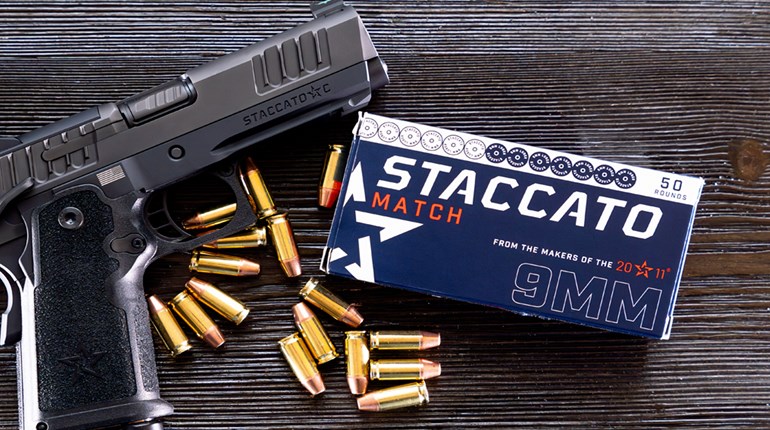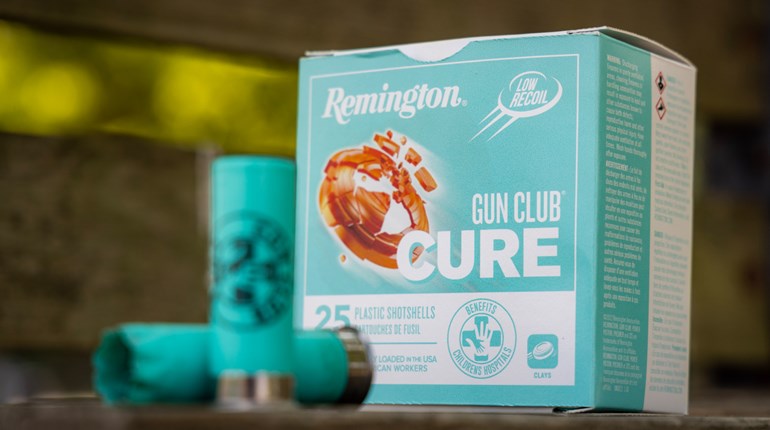One universal truth about any firearm is that it makes noise, and noise can create a bunch of problems. Permanent hearing loss and upset neighbors are two examples. With today’s expanding population, the latter problem continues to grow, so more and more shooting ranges are dealing with noise-complaint issues.
CCI addressed that problem in at least one category with its Quiet-22 ammo. This .22 Long Rifle ammo features a 40-grain bullet fired at a subsonic, 710 fps. The Quiet-22 uses a standard LR case and bullet size, but its powder charge is engineered to produce very low noise. CCI says it’s a 75 percent reduction in noise over conventional ammo.
Sound is measured in units called decibels. Normal conversation is approximately 60 decibels; heavy city traffic is about 85 decibels. A gunshot might be as loud as 170 decibels. Hearing loss occurs when your ears are exposed to continuous noise above 85 decibels or impulse noise (like a gunshot) above 140 decibels. The louder the sound, the more damage it causes.
The CCI Quiet-22 ammo creates 68 decibels at the shooter’s ear, well below the threshold for hearing damage. It’s also low enough that the neighbors probably won’t even notice you are shooting.
This is perfect ammo for target shooting, but for urban pest control a 40-grain lead bullet at low velocity is not a good “stopping” cartridge. So CCI added a “Segmented HP” bullet into the Quiet-22 line. This is a hollow-point bullet that is designed to expand slightly and then separate into three segments on impact. The idea is that three projectiles will do more damage than a single, round-nose bullet.
This is not new technology, as CCI used it in its Quick-Shock ammo a few years ago. That ammo developed a reputation as a good game stopper.
So does it all work? Well, the most obvious question is how loud is it? I lack the equipment to measure sound with anything other than my ears, but I shot the ammo out of several rifles and handguns, alternating with CCI standard .22 LR ammo, and the difference in sound was staggering. The sound of Quiet-22 was so much softer that it made the .22 LR sound like a rocket launcher by comparison. When fired from a rifle the Quiet-22 was no louder than a pellet gun. No ear protection was needed. In fact, the first time I fired with ear protection I could not tell for sure the gun went off. The ammo is slightly louder from the 6.5-inch handgun barrel, but still quite mild. When comparing the Quiet-22 ammo against the full-power .22 LR the difference was again very pronounced. There is no question whatsoever that this ammo produces a much lower noise level than any other .22 LR ammo I have tested.
The Quiet-22 ammo is not for semi-auto guns and would not cycle the action in either the Ruger 10/22 or the Remington Model 597 semi-auto rifles we tested. Of course the guns could be cycled by hand to feed from the magazines.
I tested the terminal performance by shooting into water at point-blank range. Water is a good indicator of how well the bullet performs. But it is a hard medium compared to ballistic gelatin, and a bullet that will not expand in water will rarely expand in game unless it hits bone.
My Ruger Single-Six handgun produced an average velocity of 516 fps with this ammo. Of the six shots fired into water, five remained intact and one segmented into three sections. That indicates the velocity is below the threshold for reliable expansion/segmentation of this bullet.
Using a Remington Model 504 rifle with a 20-inch barrel, the muzzle velocity averages 705 fps. Of the six shots fired into water, five segmented into three, banana-shaped pieces each. The sixth bullet segmented into three sections, but two of the sections remained attached to each other. Clearly, the bullet works as designed at this impact velocity. I think it is safe to assume that the ammo will be used for close-range work where velocity remains high and that the bullet will segment when fired from a rifle.
The standard deviation and extreme spread on the velocity was a little on the high side, probably from the reduced powder charge not filling the case. This can negatively influence accuracy, but not always. This ammo turned in some very good groups at 25 yards from two different rifles. It’s more than accurate enough for its intended use: plinking, target practice and pest control. The ammo had plenty of power to activate my backyard steel targets designed for .22s, and it would knock my.22 dueling tree’s swingers back and forth easily.
Quiet-22 is a socially responsible ammo product, one that reduces noise pollution and allows discrete pest control. I wish we had it when I was a kid. If we did, I would not be buying hearing aid batteries quite so often today.
Technical Specifications:
Type: subsonic, reduced-noise .22 LR ammo
Loads Offered: 40-gr. Round Nose; 40-gr. Segmented Hollow-Point (tested)
Muzzle Velocity: 710 fps (from rifle)
Muzzle Energy: 44.8 ft.-lbs.
Uses: target shooting, pest control
MSRP per 50: RN $3.95; SGHP $7.95




































